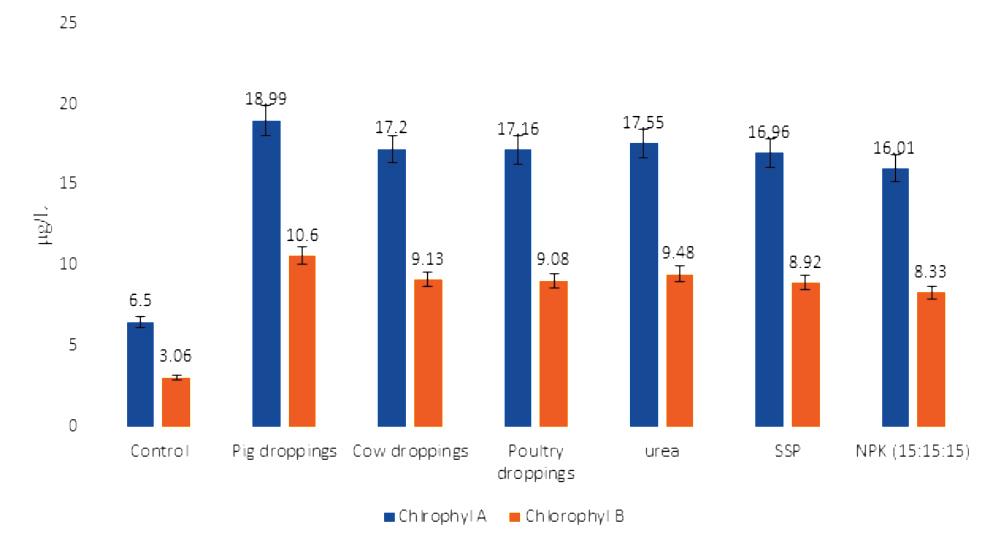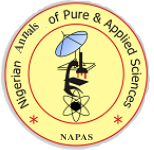Spectroscopic Analysis of the Effect of Organic and Inorganic Fertilizers on the Chlorophylls Pigment in Amaranth and Jute Mallow Vegetables
DOI:
Keywords:
chlorophyll, fertilizers, photosyntheticAbstract
The effect of six different fertilizers on concentration of photosynthetic pigments in leaves of amaranth (Amaranthus spp) and jute mallow (Corchorus olitorius) was studied in controlled conditions. Two types of pigments were examined: chlorophyll A and chlorophyll B. The highest concentration of photosynthetic pigments of 18.99 μg/L chlorophyll A; 10.6 μg/L chlorophyll B was found in the leaves of vegetables treated with pig manure and the lowest values of 16.01 μg/L chlorophyll A; 8.33 μg/L chlorophyll B in the vegetables treated with mineral fertilizer NPK 15:15:15 for amaranth, while for jute mallow the highest pigment concentration of 21.74 μg/L chlorophyll A; 12.09 μg/L chlorophyll B was found in leaves of vegetables treated with Urea and the lowest pigments of 19.02 μg/L chlorophyll A; 10.0 μg/L chlorophyll B in the seedlings treated with pig manure. Results show that the concentration of photosynthetic pigments in leaves of amaranth and jute mallow seedlings vary depending on the fertilizer that was applied, as such conducting appropriate fertilizer screening before application is critical in ensuring high yielding vegetables.



 Contact Us
Contact Us Editorial Team
Editorial Team Join As A Reviewer
Join As A Reviewer  Request For Print Copy
Request For Print Copy


 Cprint Publishers
Cprint Publishers